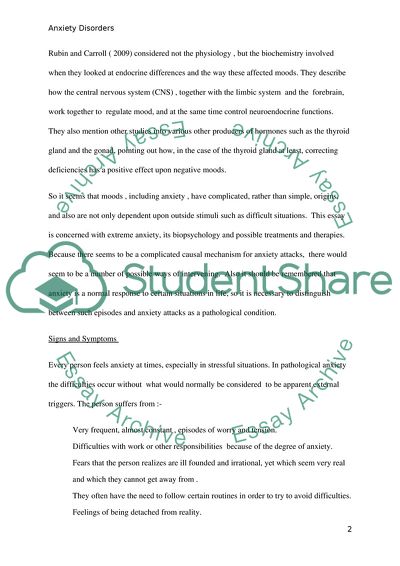Cite this document
(Biopsychology of Anxiety Disorders with Treatment Approach Using Coursework Example | Topics and Well Written Essays - 2000 words, n.d.)
Biopsychology of Anxiety Disorders with Treatment Approach Using Coursework Example | Topics and Well Written Essays - 2000 words. https://studentshare.org/psychology/1757536-biopsychology-of-anxiety-disorders-with-treatment-approach-using-medication-and-therapy
Biopsychology of Anxiety Disorders with Treatment Approach Using Coursework Example | Topics and Well Written Essays - 2000 words. https://studentshare.org/psychology/1757536-biopsychology-of-anxiety-disorders-with-treatment-approach-using-medication-and-therapy
(Biopsychology of Anxiety Disorders With Treatment Approach Using Coursework Example | Topics and Well Written Essays - 2000 Words)
Biopsychology of Anxiety Disorders With Treatment Approach Using Coursework Example | Topics and Well Written Essays - 2000 Words. https://studentshare.org/psychology/1757536-biopsychology-of-anxiety-disorders-with-treatment-approach-using-medication-and-therapy.
Biopsychology of Anxiety Disorders With Treatment Approach Using Coursework Example | Topics and Well Written Essays - 2000 Words. https://studentshare.org/psychology/1757536-biopsychology-of-anxiety-disorders-with-treatment-approach-using-medication-and-therapy.
“Biopsychology of Anxiety Disorders With Treatment Approach Using Coursework Example | Topics and Well Written Essays - 2000 Words”. https://studentshare.org/psychology/1757536-biopsychology-of-anxiety-disorders-with-treatment-approach-using-medication-and-therapy.


